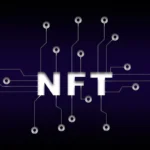Creativity often requires more than inspiration; it needs a structured process to guide and refine ideas. Writing is a powerful tool for organizing thoughts, deepening artistic expression, engaging audiences, and building meaningful connections. More and more artists, designers, and creators are embracing writing as a core part of their creative toolkit. It’s transforming how they approach their craft, and its impact is undeniable.
How Writing Transforms the Creative Process
Writing has always been integral to authors and journalists, but its value in other creative fields is now being recognized. In design, for example, writing helps clarify the story behind a visual concept, making it more accessible and impactful.
Artists like Austin Kleon, author of Steal Like an Artist, often emphasize how journaling helps them refine their thoughts and keep their creative momentum going. Similarly, Brandon Stanton, the creator of Humans of New York, uses storytelling to engage his audience and connect emotionally. Writing allows artists to organize their creativity, focus their efforts, and document their processes.
For many creatives, writing provides a space for reflection and innovation. Whether documenting their journey or sharing insights, it offers a valuable method for introspection. Musicians, filmmakers, and even chefs have adopted writing as a tool for reflection and a way to share their narratives. Chef David Chang uses his newsletter on Substack to share his culinary journey, offering personal stories that resonate deeply with his audience.
Writing on Digital Platforms: Substack and Medium Lead the Charge
The rise of platforms like Substack and Medium has revolutionized the creative industry. These platforms allow creatives to integrate writing into their daily routines, offering easy-to-use spaces for publishing newsletters, articles, and essays. Substack, in particular, has made it easy for artists to monetize their content through paid and free subscriptions while building a community of loyal followers.
One of the platform’s most compelling success stories is James Clear, whose newsletter on Substack has turned into a multi-million-dollar business. Clear’s Atomic Habits directly resulted from his consistent writing on the platform, which allowed him to engage with his audience, refine his ideas, and eventually translate his content into a bestselling book.

But it’s not just Substack that’s empowering creators. Medium offers a similar opportunity for writers and artists. The platform is known for its simplicity and massive reach, enabling creatives to share essays, stories, and long-form content that reaches a global audience. Creatives like Nikita Gill use Medium as a platform for storytelling and poetry, building a following of readers who feel deeply connected to her work. Through Medium’s Partner Program, writers can earn revenue from their articles based on readership and engagement.
The Business Impact: Writing Drives Engagement and Monetization
The business benefits of integrating writing into the creative process are tangible. By writing consistently, creatives can increase their visibility, build a brand, and engage their audience. For example, Tim Ferriss, the author of The 4-Hour Workweek, credits his blog and writing for the widespread success of his books and podcasts. Ferriss’s writing helped him build a personal brand and generated significant revenue from book sales, speaking engagements, and partnerships.
For many creatives, platforms like Substack offer a sustainable income model. They can convert subscribers into paying customers by growing their email list and creating a recurring revenue stream. This model has allowed artists to gain more control over their earnings and reduce dependence on traditional gatekeepers like publishers or galleries.
Writing as a Tool for Reflection and Growth
Writing plays a crucial role in creative growth, in addition to its business value. When creatives reflect on their journey, they clarify their direction and develop a deeper understanding of their work. Writing acts as a mirror that reflects not just their thoughts but their creative process, helping them identify new opportunities and areas for improvement. Brene Brown, in her book Daring Greatly, discusses how journaling can help creatives and leaders reflect on vulnerability and resilience, two key components of innovation.
Writing also provides a structured way to process emotions and experiences. This reflection can lead to personal growth, overcome creative blocks, and foster innovation. Many musicians, like Kendrick Lamar, use songwriting to process and share their narratives, providing insight into their creative worlds.
Building a Community Through Writing and Storytelling
At its core, writing is about building a connection with others. Creatives who share their personal stories invite others into their world, creating a lasting emotional impact. Writing allows artists to express their vision, reflect on their journey, and inspire others to join them on their creative path.
One remarkable example is Kathy Sierra, a former software designer turned writer. Through her blog and books, she built a supportive community of creators who were inspired by her approach to learning and growth. Sierra’s storytelling was about more than just tips and techniques—it was about creating a culture where people felt understood and empowered. This kind of community building is exactly what writing can do for creatives in any field.
Writing connects creatives with their audience more intimately than social media posts or videos alone, whether through Substack, Medium, or personal blogs. It’s a platform for meaningful feedback and interaction. You can encourage readers to engage with your content and share their thoughts; you create a dynamic ecosystem in which both the creator and the audience contribute to the evolution of the work.
Integrating Writing into Your Daily Creative Routine
Make writing part of your daily creative routine to harness its benefits fully. Setting aside time each day to write—even for just 20 minutes—can help maintain your creative momentum. Writing provides the clarity needed to move forward, whether you’re jotting down ideas, reflecting on recent projects, or planning your next steps.
Creatives can also experiment with different writing formats. For instance, journaling prompts or writing essays about your creative challenges can spark new ideas and perspectives. Medium is a great place to try this out, offering a vast audience and the opportunity to engage with people interested in similar topics.
Writing isn’t just about publishing—it’s also about gathering feedback. Use your platforms to invite constructive criticism. When you open yourself up to feedback, you improve your work and deepen your connection with your audience. As Ryan Holiday, author of The Obstacle Is the Way, points out, feedback is essential for refining ideas and improving over time.
Expanding Creative Horizons Through Writing
Writing opens up new creative territories. Documenting your artistic journey is a great way to discover untapped areas of interest. Many creators find that their reflections lead them to explore new media—musicians may start writing poetry, designers may experiment with short stories, and chefs may explore memoirs. This cross-disciplinary exploration often sparks new ideas and expands the scope of their creative practice.
Creative people who embrace writing can also step out of their comfort zones by experimenting with different styles, such as poetry, essays, or short stories. For example, David Sedaris, a writer and humorist, has expanded his creative practice by mixing personal stories with humor and essay writing. His work transcends traditional boundaries and invites a wider audience to engage.
Embracing Writing as a Creative Catalyst
Incorporating writing into your creative practice isn’t just about improving your work—it’s about unlocking new possibilities. Writing allows you to reflect, innovate, and connect in ways purely visual or auditory mediums cannot. Documenting your process, sharing your stories, and receiving feedback helps you build a creative legacy that inspires you and your audience.
Remember, the possibilities for integrating writing into your creative journey are endless. Whether on Substack, Medium, or your platform, writing can be a powerful tool for self-expression, reflection, and growth. So, start writing today—document your journey, connect with your audience, and unlock new levels of creativity.

Emma Smith is a passionate writer and content creator focused on the latest trends in the arts, design, and creative industries. With a keen eye for innovation and creativity, she shares insights and updates that inspire professionals and enthusiasts alike.








